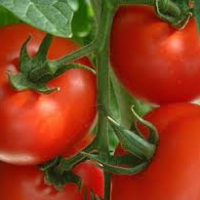De-leafing is one of the tasks that beginners to tomato-growing have to learn. It’s a simple task, and knowing why you need to do it makes it easier still. Basically, you take the lowest leaves off single-stemmed vine tomato plants as they grow upwards. It’s harder and less profitable to do it on bush-type plants with their smaller leaves and tangled growth habit, so just cut out any dead or diseased bits and otherwise leave them alone.
Only the leaves on the top 75 centimetres of vine tomatoes contribute to their growth and yield: the rest are passengers using up feed and water. The lowest leaves are the oldest, most tired and shaded ones that contribute nothing. They are magnets for fungus diseases such as Botrytis (grey mould), and increase the risk of infection of ripening tomatoes by trapping damp stagnant air around them. They can hide weeds and slugs that make things worse again.
There are two ways of de-leafing. In the morning, when plants are still pumped up with water drawn up during the night, the leaf stem will snap off cleanly if bent sharply upwards at the base. The neat wound left behind will be dry and resistant to fungal infection by nightfall. The easiest way to break off leaves is to place your fingers behind the main stem opposite the leaf, and your thumb on the leaf stem about two centimetres above the base, then pull in your thumb smartly towards the main stem to break it inwards. If it hangs on to the stem by a bit at the top snap it downwards to finish the job. Cutting works too, but the stubs that you leave behind can rot and infect the main stem. Compost the leaves, and wash your hands thoroughly.





